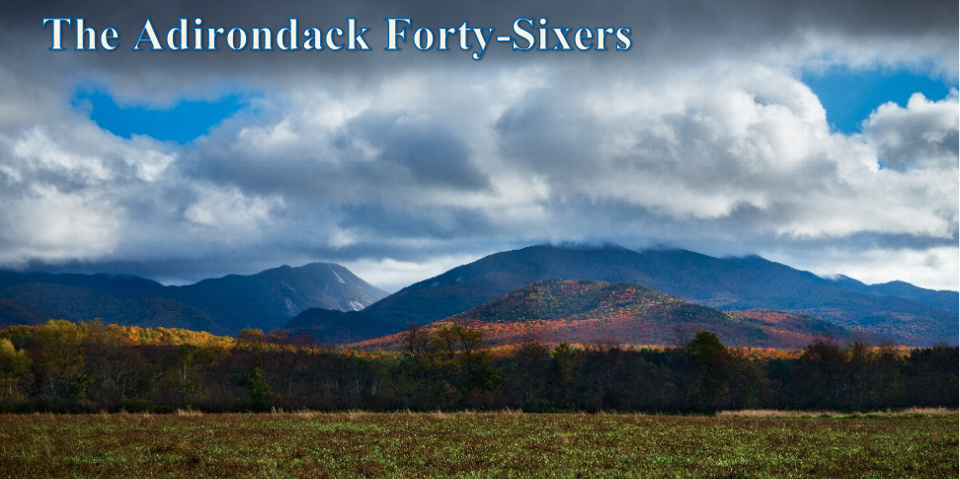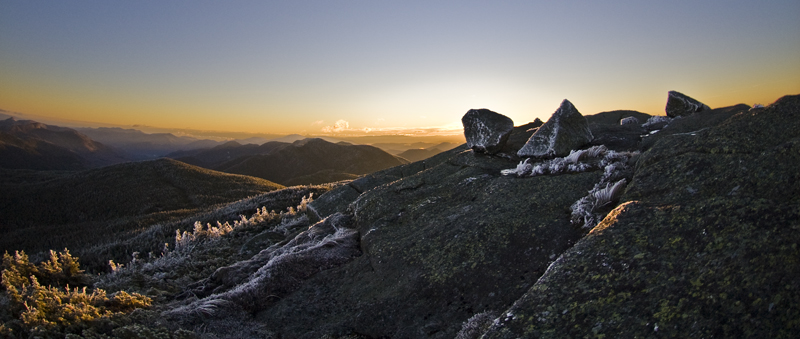Mount Marcy
At 5344’ tall, Mount Marcy is the highest peak in New York State. Located in the heart of the High Peaks Region of the Adirondacks, Mount Marcy is a popular day hike among both visitors and locals, as it boasts spectacular views from its rocky summit (adk46er.org). The mountain was called Tahawus, a Native American word that means “cloud splitter,” by white settlers but the native people never gave it a proper name (highpeaksclimbing.com). William C. Redfield sparked local interest in climbing the mountain after he spotted it from a hill on the south bank of the Opalescent River and named it “The High Peak of Essex.” He subsequently brought the idea of a “natural history” survey of the park to New York Secretary of State John Adams Dix in the hopes of being able to explore the land surrounding Marcy (Heaven 155). Eventually, the mountain was officially named after Governor William Learned Marcy authorized Redfield’s proposed geological survey that first explored the area (Goodwin). The renaming of the peak drew criticism from two groups – those who felt that mountains should not be named after politicians, and those who incorrectly thought “Tahawus” was the name the Native Americans originally gave to Mount Marcy (Heaven 159).
In 1837, Ebenezer Emmons’ geological survey team made the first ascent of Mount Marcy without trails, signs, or guidebooks to aid their adventure (NYSDEC 4). The group struggled through dense virgin forests and the thick alpine growth near Marcy’s summit to make the ascent. Though Emmons’ team summited Marcy in 1837, it wasn’t until 1861 that Orson “Old Mountain” Phelps cut the first primitive trail to the top (Adirondack.net and Heaven 173) from Upper Ausable Lake (highpeaksclimbing.com). Before 1861, however, the rugged landscape and lack of trails was no deterrent for the earliest Adirondack hikers, such as adventure writer J.T. Headly, who on his 1846 ascent of Mount Marcy commented, “A tramp of forty miles through a pathless forest to see one mountain is a high price to pay, but we have resolved to do it,” (Bronski 23). The difficulty of these early adventures in the High Peaks rarely come to mind today when we park our cars at the Adirondak Loj trailhead and follow the well marked and maintained seven and a half mile trail to Marcy’s summit.
Today, Marcy remains a popular hike among day-trippers and backpackers alike. The mountain currently boasts four well-maintained and marked trails ranging from moderate to very demanding that all start at the two most popular trailheads in the High Peaks, the Adirondak Loj and the Garden in Keene Valley (highpeaksclimbing.com). From Marcy’s alpine summit on a clear day, one can see the summits of 43 other high peaks and even Quebec’s Mount Royal (Adirondack.net). Even 175 years after the first ascent, the desire to climb New York’s highest peak remains, especially for aspiring 46ers, for whom an ascent of Marcy is certainly one to remember.
Work Cited
Bronski, Peter. At the Mercy of the Mountains: True Stories of Survival and tragedy in New York’s Adirondacks. Guilford, Connecticut: The Lyons Press, 2008. Print.
Goodwin, Tony. “Mount Marcy: The High Peak of New York.” Adirondack Explorer. Jan 2000. Web. 11 Apr. 2015.
“Mount Marcy – Highest Mountain in New York.” Adirondack.net. Web. 11 Apr. 2015.
The Adirondack Forty-Sixers. ADK 46ers. N.p. n.d. Web. 22 Jan 2015.
The Adirondack Forty-Sixers. Heaven Up-h’isted-ness!: The History of the Adirondack Forty-Sixers and the High Peaks of the Adirondacks. Adirondack Forty-Sixers, Inc. 2011. Print.
The State of New York Department of Environmental Conservation (NYSDEC). The Trails to Marcy. Albany, New York: NYSDEC, 1970. Print.
Yaris, Edward. “Mount Marcy – Adirondacks, New York.” High Peaks Climbing. Adirondack Mountains. Web. 11 Apr. 2015.

